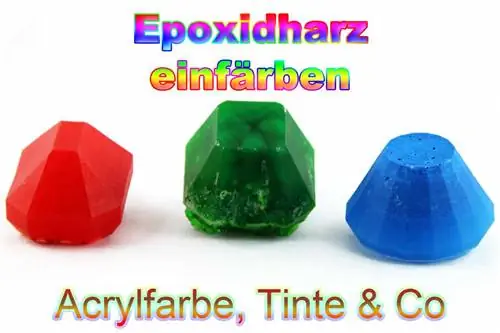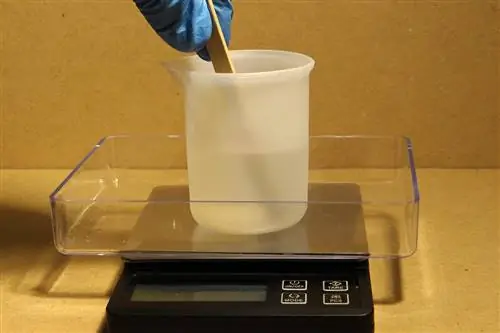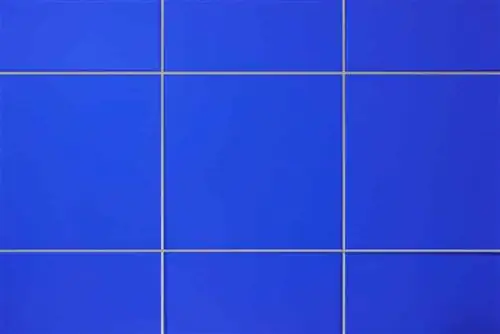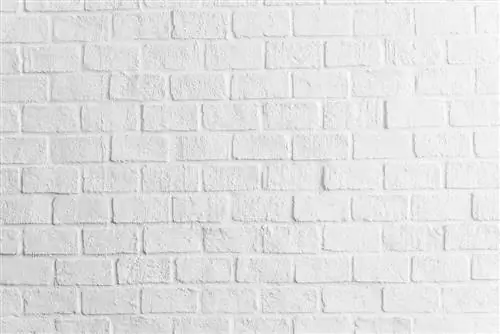- Author admin [email protected].
- Public 2023-12-17 03:39.
- Last modified 2025-01-24 12:45.
Whether model making or technical applications, epoxy resin, also known as resin, is used in many ways today. Instead of having to laboriously paint components made of this material, the desired color can be given to the resin by coloring it before processing. We will explain to you which materials are suitable for dyeing and how to do it.
Which colors are suitable?
A wide variety of materials are suitable for giving resin the desired color. Which one is used depends largely on the desired result. What all colors have in common, however, are the requirements that must be placed on the colors:
- Good distribution in the viscous resin
- No adverse influence on setting behavior
- No negative impact on the technical properties of the hardened resin
- High dosage for good coloring properties with low water entry into the resin mixture
Even paints that are basically suitable can have a detrimental effect on the epoxy urine if the dosage is too high. As a rule, a color addition of no more than five percent is assumed. In individual cases, the proportion can even rise to 15 percent, although the manufacturer of the resin should specify the corresponding higher upper limits.
ATTENTION:
Regardless of the colorant chosen, epoxy hard always retains a glassy impression with slightly translucent colors. In addition, it loses its color completely very quickly outdoors, as the resin is UB-permeable and the pigments are destroyed by UV light in a short time.
How to dye?
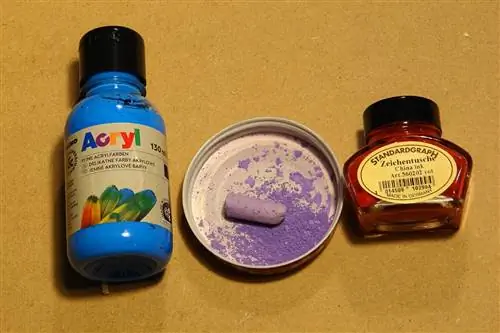
The requirements mentioned can be found in a variety of different dyes. The most common ones for this purpose are:
Special epoxy hard paints
Designed specifically for coloring epoxy resin, most resin manufacturers today offer color additives for their products. The colors are well compatible with the resin and easy to work with. A wide range of possible colors also allows you to work quickly with little effort for additional mixing or tinting of colors.
Acrylic paint
Created from pigments, resin and water, the base of this paint is very similar to epoxy resin. Therefore, mixing results in very even distributions with good dyeing performance.
NOTE:
Translucent in the form of the colored epoxy resin, many acrylic paints harden with a slightly milky color cast. This results from the acrylic binder used. For a clear, unclouded color, you should make sure to use paint with a clear acrylic binder.
Ink
Regardless of whether it is a water-based or alcohol-based ink, it has an extremely high pigmentation, as it is intended to produce readable writing on the paper even in the smallest amounts. Therefore, just a few drops of ink are enough to strongly color the resin. Only the color selection is very limited.
Airbrush paint
In the actual sense, airbrush paint does not refer to a type of color, but rather to all water-based colors with strong flowing and extremely finely pigmented properties. Normally they need these in order to be able to be processed in the airbrush gun. In epoxy resin, on the other hand, they cause good distribution and an evenly intense color.
Watercolor
The watery base of these well-known colors ensures very good distribution in the resin. The disadvantage is the comparatively low pigmentation, which makes it difficult to create intense colors with watercolors.
Chalk
If you prefer a grainy, almost crystalline look instead of a homogeneous color, you should try chalk. Finely ground, the pigment distributes well in the resin without dissolving.
TIP:
Instead of painstakingly grinding the familiar block shape of chalk, artists' supplies offer chalk already ground as a fine, lump-free powder.
Other dry pigments
Ultimately, a wide variety of solid pigments are suitable for use with epoxy resin. Since they do not dissolve, they do not affect the chemical properties of the setting process, but at the same time they always retain their grainy appearance. New, high-gloss pigments now even allow coloring with a metallic look.
ATTENTION:
You keep reading about oil paints for coloring resin. We expressly warn against this at this point! Since the base of this dye is oil, even long stirring cannot create a real connection between the color and the resin. The color droplets repeatedly separate from the resin and remain as small balls in the hardened resin. In addition to causing uneven coloring, these color bubbles can also affect the static integrity of components created from epoxy resin.
How to mix?
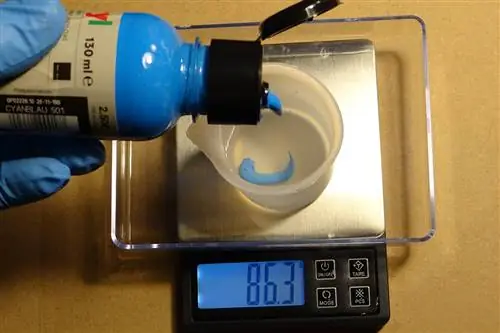
When mixing paint and epoxy resin, it's best to go with your gut feeling. Because there are no fixed sizes regarding the addition of the amount of color etc. It makes sense to consider the following basics when coloring the resin:
- First mix or prepare paint, if necessary, ready for use
- Mix the resin completely, ensuring sufficient bonding of resin and hardener
- Only then combine the finished color with fully mixed resin
- Add color in small amounts and stir in completely
- If further color is required, add color and work it in completely again
- When using pigment powders, pay attention to the fine grain size and remove any lumps before stirring in
- Do not exceed the manufacturer's maximum value with added color

